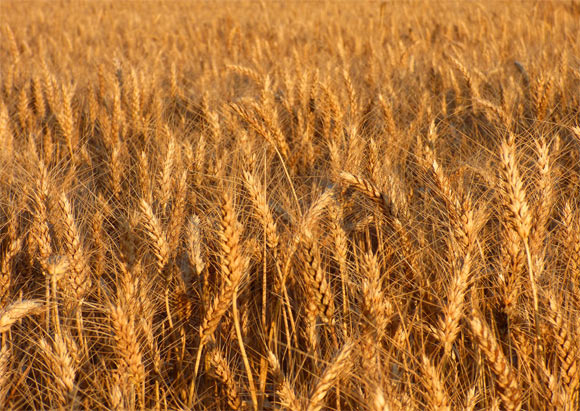A multinational team of researchers has successfully sequenced and analyzed the genome of durum wheat (Triticum turgidum ssp. durum), a cereal grain mainly used for pasta production.
Durum wheat was established as a prominent crop roughly 1,500 to 2,000 years ago in the Mediterranean area.
It evolved from domesticated emmer wheat (Triticum turgidum ssp. dicoccum), which itself derived from wild emmer wheat (T. turgidum ssp. dicoccoides) in the Fertile Crescent about 10,000 years ago.
“Having the durum wheat high-quality genome sequence enables us to better understand the genetics of gluten proteins and the factors that control the nutritional properties of semolina. This will help to improve pasta quality traits,” said Dr. Aldo Ceriotti, a researcher at Italy’s National Research Council.
Dr. Ceriotti and colleagues assembled the complete genome of a durum wheat variety called Svevo.
“We can now examine the genes, their order and structure to assemble a blueprint that provides an opportunity to understand how the genes work and communicate with one another,” said Dr. Curtis Pozniak, from the University of Saskatchewan.
“With this blueprint, we can now work quickly to identify genes that are responsible for the traits we select for in our breeding programs such as yield, disease resistance, and nutritional properties.”
The researchers then compared the durum wheat genome, which is four times the size of the human genome, to that of its wild relative and were able to reveal genes that humans have been selecting over the centuries.
They uncovered a loss of genomic diversity in durum wheat compared to its wild wheat relative, and they’ve been able to map these areas of loss and precisely recover beneficial genes lost during centuries of breeding.
“Unlike in humans, durum wheat is a so-called polyploid and contains two genomes. How these genomes interact and coordinate their activities is a fundamental question that might also have impact on food quality and yield,” said Dr. Klaus Mayer, from the Helmholtz Zentrum.
In an exciting genetic discovery, the team identified the gene in durum wheat responsible for accumulation of cadmium, a toxic heavy metal found in many soils.
“Now that we’ve identified this gene, we can effectively select varieties that do not accumulate significant cadmium in the grain — levels well below World Health Organization standards which will ensure that our durum wheat products are more nutritionally safe,” Dr. Pozniak said.
The results appear in the journal Nature Genetics.
_____
Marco Maccaferri et al. Durum wheat genome highlights past domestication signatures and future improvement targets. Nature Genetics, published online April 8, 2019; doi: 10.1038/s41588-019-0381-3








